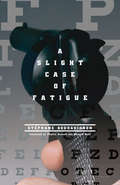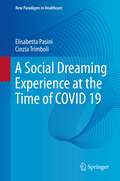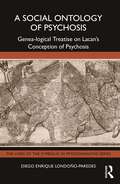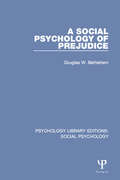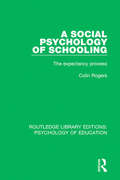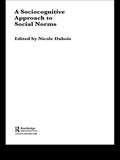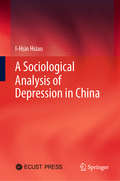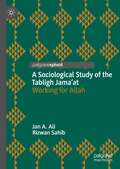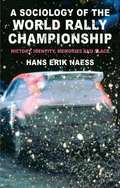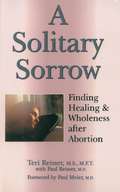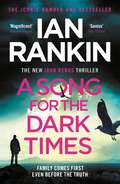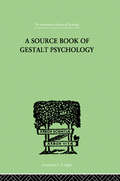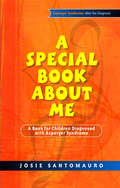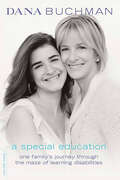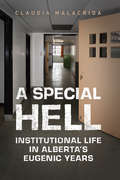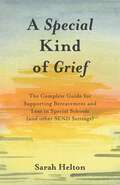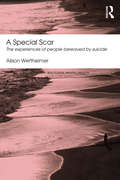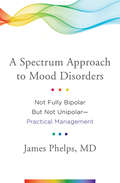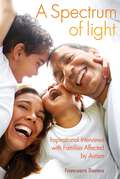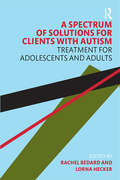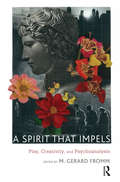- Table View
- List View
A Slight Case of Fatigue
by Stéphane BourguignonAt forty-one, Eddy is in existential extremis. He once had an enviable life--a wife he adored, a young son, a cozy suburban house surrounded by carefully planted and sculpted gardens, the luxury to pursue his passion and become a professional horticulturalist. Now he's separated from his wife, estranged from his son, he's let his garden grow wild--like the rest of his life, it's totally out of control. When his son, Maxime, tired of being embarrassed by his father's dilapidated house, his garden gone to seed and his old beater of a car, decides to leave home and live with his cool, professional mother--who immediately demands twice the alimony--Eddy goes on a rampage, smashing his son's furniture and hurtling it and his possessions through windows he neglects to open first. Ending up in the hospital, the doctor diagnoses "a slight case of fatigue." As Eddy plunges deeper into despair, insomnia and self-destruction, frantically searching for a way to live an authentic life, punching out his boss and finally threatening his best friend with a gun, the narrative voice of the novel changes, and we begin to see Eddy, his parents, his childhood and his past loves through the eyes of his wife, friends and companions. Stéphane Bourguignon, the creator of the much-loved television series La vie, la vie, about a group of thirty-somethings in Montreal, has said that he wanted this book to look at the darker side of life. Written like a surrealist Camus on steroids, in multiple voices, with an uncanny eye and ear for graphic physicality and keen psychological insight, Bourguignon's examination of relationships between men and women, fathers and sons, past wounds and present possibilities is filled with a raucous warmth and humanity--but it is also intensely, darkly and almost unbearably humorous. Translated by Phyllis Aronoff & Howard Scott
A Small Madness
by Dianne TouchellRose and Michael are good students with bright futures. They are also in love. But when Rose gets pregnant, her behavior becomes increasingly strange as she pulls away from her best friend, and from Michael, while she struggles to cope with her predicament.Rose cannot admit that she is pregnant (“If I say it, it will come to be true.”). She moves from denial to ineptly trying to terminate her pregnancy, to believing that she has miscarried, while deep inside, she is on a mental and emotional downward spiral. Meanwhile, Michael, in his confusion, desperation to help and fear of the wrath of his controlling father, sinks into his own kind of small madness.Inspired by the story of two teens in the US who were arrested for hiding the girl’s pregnancy and later disposing of the baby, Touchell says, “When I saw them on TV I was amazed to see they looked like normal kids. They were from good families; they just looked destroyed… . I thought, there’s more than one victim here; what went on with these kids and why did they think they had no one to go to?”This is a moving and powerfully written novel told from the alternating viewpoints of Rose and Michael with compassion and a gentle touch. It is an honest, unflinching look at the complex world of young readers.
A Smart Girl's Guide to Friendship Troubles: Dealing with Fights, Being Left Out and the Whole Popularity Thing (American Girl)
by Patti Kelley CriswellIn this book you'll find advice for solving your friendship problems. Tips and quizzes will help you get to know your friends--and yourself--a little bit better. Plus, you'll meet girls who've gone through serious friendship troubles and learn how they survived. Every girl has what it takes to be a great friend and to choose friends who are right for her. We hope this book helps you do just that.
A Social Dreaming Experience at the Time of COVID 19 (New Paradigms in Healthcare)
by Elisabetta Pasini Cinzia TrimboliThe book describes the experience of four Social Dreaming Matrices held online between March and May 2020, during the first lockdown caused by the Covid 19 emergency. The pandemic isolated us and imposed prolonged contact with ourselves and our solitary thoughts. Against this backdrop, there was hope for change, a desire for a different kind of sociability and different forms of intimacy. On the basis of this evidence, our research supports the shift "from experiencing trauma to reacting to trauma", looking at a collective traumatic experience not only as something to be overcome but as an opportunity for a transformation that changes our mental schemes in relation to the external context. We have identified Social Dreaming as a privileged technique to overcome a collective traumatic experience, supporting its elaboration through collective feelings, new connections between intuition and rational thought, the discovery of community meanings. The authors's thesis is that the much-needed transition from 'magical thinking' to 'transformative thinking' takes place in a setting that is able to contain the anxieties of life's transitional phases, supporting the creation of new rituals and new social bonds and sustaining the passage from “me” to a “wider we”.
A Social Ontology of Psychosis: Genea-logical Treatise on Lacan’s Conception of Psychosis (The Lines of the Symbolic in Psychoanalysis Series)
by Diego Enrique Londoño-ParedesIn A Social Ontology of Psychosis, Diego Enrique Londoño-Paredes explores how to interpret and apply the concept of the signifier of the Name-of-the-Father in Lacanian theory, particularly in the context of working with psychosis.Londoño proposes a logical framework drawing on the work of Badiou, then traces the historical development of this concept and its implications as a structural necessity for anyone who speaks and engages in discourse. The book opens by exploring set theory, transitioning from nought to one, from the Thing to the object, essential for any presentation. Subsequently, it follows a historical path, examining the evolution of the figure and the signifier of the Father, journeying from ancient Mesopotamian roots through Modernity, touching upon Claudel’s theater and the films of the Coen brothers. Finally, it aligns Searle’s social ontology with Lacan’s discourses, highlighting psychosis as an illustration of being outside discourse, particularly when the Name-of-the-Father is foreclosed. Case material illustrates various ways psychosis manifests without distinct clinical evidence.This comprehensive book will be of great interest to practitioners and scholars in psychoanalysis, philosophy, the humanities, and the history of mental health and knowledge.
A Social Psychology of Prejudice (Psychology Library Editions: Social Psychology)
by Douglas W. BethlehemPrejudice is a topic of major interest to psychologists and sociologists, but had rarely been given the broad treatment its importance demanded. Originally published in 1985, this title first introduces the term, showing how it is related to other terms commonly used in psychology and the social sciences, and explains simply and clearly what a scientific analysis must involve. It then goes on to show how prejudice affects our reasoning and judgement in a wide variety of spheres in addition to race or ethnic attitudes. Next it traces the development of prejudiced attitudes towards black people in Britain and the New World, through the slave system and the slave trade, with a brief look at the remarkably similar development of ethnic attitudes in South Africa at the time. It then goes on to discuss the debate about race differences in intelligence, showing simply and clearly what the statistical assumptions underlying the heritability hypothesis are. Following that the psychological explanation of prejudice and principles explaining prejudice are spelled out, the question of sex prejudice is dealt with, and finally, the extent of ethnic prejudice in Britain and the USA is discussed. The final chapter is a summary of the general principles and conclusions discussed through the book. This title provides a scientific and historical perspective on prejudice, a thorough literature review, and clear summarising principles of prejudice, in a simple and straightforward style.
A Social Psychology of Schooling: The Expectancy Process (Routledge Library Editions: Psychology of Education)
by Colin RogersIf a theory of education is to be helpful to the practising teacher, it must take the social context of learning into account. Originally published in 1982, Colin Rogers does just this, exploring the implications of two decades’ detailed research in to the social psychology of teaching and learning. The central theme that emerges from this study is the importance of the still controversial ‘teacher-expectancy effect’ – the effect of teachers’ expectations on the performance of pupils. By examining in detail the claims made by those who believe that the expectations of teachers can influence levels of pupils’ academic attainment, the book shows the complexity of interpersonal interaction and perception within the classroom and the nature of problems involved in studying these. It also focuses on the way that the mutual perceptions of teachers and pupils themselves affect, and are affected by, other aspects of life in a school; and extensive use is made of research conducted in British schools to illustrate major points. The conclusion of the study was that it is the classroom – the very environment in which teachers and pupils interact – rather than teacher training that may need reform.
A Sociocognitive Approach to Social Norms (Routledge Research International Series in Social Psychology #Vol. 5)
by Nicole DuboisSocieties and groups attribute greater value to some behaviours and some judgments. These 'norms' are what is most important for understanding how behaviours and judgments are socially regulated. The approach presented examines in particular the social foundations of our judgments.
A Sociological Analysis of Depression in China
by I-Hsin HsiaoThis book explores the relationship between macro-social structure, social construction and micro-healthcare behaviors. It constructs a two-layered and two-faceted sociological analytical framework to analyze the causes of depression in China and account for the comparatively low rate of depression in the country, and provides a sociological interpretation of depression in China from a global perspective that has rarely been adopted in previous sociological studies in China. Presenting first-hand data and case studies, it describes and analyzes patients’ subjective experience and actions as well as physicians’ viewpoints. It also includes interviews with 34 patients, 4 family members, 3 psychological consultants and 5 psychiatrists.Offering an integrated interpretation of depression in China from the perspectives of sociology, medical science and psychology, this book is intended primarily, but not exclusively, for the growing body of researchers and students who are looking for ways of analyzing depression, especially in China. It is also a valuable resource for practitioners working in the field.
A Sociological Study of the Tabligh Jama’at: Working for Allah
by Jan A. Ali Rizwan SahibIn this book we study The Tabligh Jama’at, an Islamic revivalist movement which, through participation in its preaching tours, provides satisfaction to individuals experiencing the crisis of modernity. Preaching tours enable Muslims to become workers for Allah and involved in the renewal of Allah’s world. We explore the ideological underpinning of preaching and working for Allah through the application of Frame Theory. Through an analytic framework comprising framing tasks and framing processes we unpack how the ideas of Islamic revivalism found in key Tabligh Jama’at written and oral texts – the Faza’il-e-A’maal and bayans – are packaged and communicated in such a way as to attract individuals to participate in preaching tours. The book concludes that working for Allah provides Muslims with meaning, social solidarity, and satisfaction which modernity has failed to provide them. This book will appeal to academics, researchers, journalists, policy-makers, and research students interested in or working on Islamic revivalist movements.
A Sociology of the World Rally Championship
by Hans Erik NaessDrawing upon interviews with key people in the World Rally Championship as well as trans-local ethnographic research, this book explores questions of commerciality and sporting identity, tackling the sport's controversial handling of the shift into 'the commercial age'. It is essential reading on combining sporting heritage and commercial progress.
A Solitary Sorrow: Finding Healing & Wholeness after Abortion
by Teri Reisser Paul ReisserDespite the growing frequency of abortions, most women feel intensely isolated, guilty, and angry afterward. Co-authored by a family therapist and a physician, this book addresses the questions women have about Post-Abortion Syndrome and how to deal with feelings of loss, guilt, and anger. The Reissers have counseled hundreds of post-abortion women.
A Song for the Dark Times: The number one bestselling series that inspired BBC One’s REBUS
by Ian RankinFrom the iconic Number One bestseller Ian Rankin, comes one of the must-read books of the year: A SONG FOR THE DARK TIMES 'Genius ... Only great novels capture the spirit of the age. This is one of them.'THE TIMES* * * * *'He's gone...'When his daughter Samantha calls in the dead of night, John Rebus knows it's not good news. Her husband has been missing for two days.Rebus fears the worst - and knows from his lifetime in the police that his daughter will be the prime suspect.He wasn't the best father - the job always came first - but now his daughter needs him more than ever. But is he going as a father or a detective?As he leaves at dawn to drive to the windswept coast - and a small town with big secrets - he wonders whether this might be the first time in his life where the truth is the one thing he doesn't want to find...PRAISE FOR A SONG FOR THE DARK TIMES:'Magnificent ... utterly unputdownable and an immersive pleasure' MARIAN KEYES'This is Rankin at his best, Rebus at his best, storytelling that meets the moment and transcends all genres and expectations' MICHAEL CONNELLY'An outstanding addition to one of the finest bodies of work in crime fiction' MICK HERRON'Rankin remains the king of the castle' THE TIMES'Typically compelling' DAILY TELEGRAPH'Masterly storytelling' SUNDAY EXPRESS'Excellent' LIZ NUGENT'The best that the crime genre can offer' FT'Rankin grows better with time . . . Rebus grows ever more compelling' DAILY MAIL* * * * *PRAISE FOR THE ICONIC NUMBER ONE BESTSELLER:'Ian Rankin is a genius'LEE CHILD'A master storyteller'GUARDIAN'Rebus is one of British crime writing's greatest characters: alongside Holmes, Poirot and Morse'DAILY MAIL'Great fiction, full stop'THE TIMES'One of Britain's leading novelists in any genre'NEW STATESMAN'Rankin is a phenomenon'SPECTATOR'Worthy of Agatha Christie at her best'SCOTSMAN'The king of crime fiction'SUNDAY EXPRESS**** Ian Rankin's SONG FOR THE DARK TIMES was a Sunday Times bestseller w/c 5th October 2020
A Song for the Dark Times: The number one bestselling series that inspired BBC One’s REBUS
by Ian RankinFrom the iconic Number One bestseller Ian Rankin, comes one of the must-read books of the year: A SONG FOR THE DARK TIMES 'Genius ... Only great novels capture the spirit of the age. This is one of them.'THE TIMES* * * * *'He's gone...'When his daughter Samantha calls in the dead of night, John Rebus knows it's not good news. Her husband has been missing for two days.Rebus fears the worst - and knows from his lifetime in the police that his daughter will be the prime suspect.He wasn't the best father - the job always came first - but now his daughter needs him more than ever. But is he going as a father or a detective?As he leaves at dawn to drive to the windswept coast - and a small town with big secrets - he wonders whether this might be the first time in his life where the truth is the one thing he doesn't want to find...PRAISE FOR A SONG FOR THE DARK TIMES:'Magnificent ... utterly unputdownable and an immersive pleasure' MARIAN KEYES'This is Rankin at his best, Rebus at his best, storytelling that meets the moment and transcends all genres and expectations' MICHAEL CONNELLY'An outstanding addition to one of the finest bodies of work in crime fiction' MICK HERRON'Rankin remains the king of the castle' THE TIMES'Typically compelling' DAILY TELEGRAPH'Masterly storytelling' SUNDAY EXPRESS'Excellent' LIZ NUGENT'The best that the crime genre can offer' FT'Rankin grows better with time . . . Rebus grows ever more compelling' DAILY MAIL* * * * *PRAISE FOR THE ICONIC NUMBER ONE BESTSELLER:'Ian Rankin is a genius'LEE CHILD'A master storyteller'GUARDIAN'Rebus is one of British crime writing's greatest characters: alongside Holmes, Poirot and Morse'DAILY MAIL'Great fiction, full stop'THE TIMES'One of Britain's leading novelists in any genre'NEW STATESMAN'Rankin is a phenomenon'SPECTATOR'Worthy of Agatha Christie at her best'SCOTSMAN'The king of crime fiction'SUNDAY EXPRESS**** Ian Rankin's SONG FOR THE DARK TIMES was a Sunday Times bestseller w/c 5th October 2020
A Source Book Of Gestalt Psychology (International Library Of Psychology Ser.)
by Ellis, Willis DThis is Volume II of twenty-one in a series of Cognitive Psychology. Originally published in 1938. The war, differences of tongue, sentiment, and background all contributed towards making it difficult for English-speaking readers to welcome what they were the experimental methods and results of certain German psychologists. The gap thus created was not bridged until very recent times: notably by the publication in 1935 of Professor K. Koffka’s Principles of Gestalt Psychology. Even this important work, however, does not wholly effect the necessary transition from the German psychology of 1912 to the present day, and Professor Koffka himself mentions this in a Preface footnote of his book. The present volume is offered in the hope that it may play a part in completing the structure.
A Special Book About Me: A Book for Children Diagnosed with Asperger Syndrome
by Josie Santomauro Carla MarinoThere's a kid at school who gets extra help from a special teacher. He has temper tantrums when he is angry and sometimes finds it hard to pay attention. He might even have been to a special school to learn how to behave appropriately in class. One day this kid started to ask questions like, "Why do I feel different - am I not like other kids?" This kid might be a little different from others in some ways ... but this kid is NOT STUPID! Can you solve the mystery of the special kid? This book offers a fun and accessible introduction for a child diagnosed with Asperger Syndrome (AS). Intended as a support tool in the initial period after diagnosis, A Special Book About Me is varied and engaging, and addresses questions or concerns that the child might have, such as 'What are the characteristics of AS?', 'Why did it happen to me?', and 'What happens now?'. Also included are poems, stories, illustrations and activities to help them come to terms with and move forward from a diagnosis of AS. A Special Book About Me will be essential reading for children in the initial period after a diagnosis of AS.
A Special Education: One Family's Journey Through the Maze of Learning Disabilities
by Dana Buchman Charlotte FarberDesigner Dana BuchmanOCOs chronicle of her daughterOCOs struggle with learning disabilities and of her own journey to become the mother Charlotte needs her to be"
A Special Hell: Institutional Life in Alberta's Eugenic Years
by Claudia MalacridaUsing rare interviews with former inmates and workers, institutional documentation, and governmental archives, Claudia Malacrida illuminates the dark history of the treatment of "mentally defective" children and adults in twentieth-century Alberta. Focusing on the Michener Centre in Red Deer, one of the last such facilities operating in Canada, A Special Hell is a sobering account of the connection between institutionalization and eugenics. Malacrida explains how isolating the Michener Centre's residents from their communities served as a form of passive eugenics that complemented the active eugenics program of the Alberta Eugenics Board. Instead of receiving an education, inmates worked for little or no pay - sometimes in homes and businesses in Red Deer - under the guise of vocational rehabilitation. The success of this model resulted in huge institutional growth, chronic crowding, and terrible living conditions that included both routine and extraordinary abuse. Combining the powerful testimony of survivors with a detailed analysis of the institutional impulses at work at the Michener Centre, A Special Hell is essential reading for those interested in the disturbing past and troubling future of the institutional treatment of people with disabilities.
A Special Kind of Grief: The Complete Guide for Supporting Bereavement and Loss in Special Schools (and Other SEND Settings)
by Sarah HeltonChildren with SEND (special educational needs and disabilities), especially those in special schools, often experience grief at a much younger age than others, as some of their peers are more likely to have life-limiting medical conditions. Yet many adults do not know the best way to support a grieving child with SEND. This book provides all the resources that educational professionals need to ensure their community is fully prepared to acknowledge and support pupil bereavement and loss. Issues covered include bereavement and loss policies and procedures, an appropriate curriculum (including the issues of life, death and loss), how to inform the school community of the death, how to support pupils and staff with the loss, common signs of grieving and how grief affects children at different ages and developmental stages, plus activities and resources to support pupils with their grief. There is also an extensive appendix with template documents for schools to use such as draft letters, policies, procedures, curriculum and lesson ideas.
A Special Scar: The experiences of people bereaved by suicide (Routledge Mental Health Classic Editions)
by Alison WertheimerEvery 85 minutes someone in the UK takes their own life and the suicide rate is currently the highest since 2004. Society often reacts with unease, fear and even disapproval but what happens to those bereaved by a self-inflicted death? The reasons leading someone to take their own life are complex, and the bereavement reactions of survivors of suicide can also be complex, including shame, guilt, sadness and the effects of trauma, stigma and social isolation. It can be difficult for those personally affected by a suicide death to come to terms with their loss and seek help and support. A Special Scar looks in detail at the impact of suicide and offers practical help for survivors, relatives and friends of people who have taken their own life. Fifty bereaved people tell their stories, showing us that, by not hiding the truth from themselves and others they have been able to learn to live with the suicide, offering hope to others facing this traumatic loss. This Classic Edition includes a brand-new introduction to the work and will be an invaluable resource for survivors of suicide as well as for all those who are in contact with them, including police and coroner's officers, bereavement services, self-help organisations for survivors, mental health professionals, social workers, GPs, counsellors and therapists.
A Spectrum Approach to Mood Disorders: Not Fully Bipolar but Not Unipolar--Practical Management
by James PhelpsHow to understand your clients' true illnesses, not just their DSM checklists. Though the DSM discusses the criteria for mood disorders in absolute terms--either present or absent--professionals are aware that while such dichotomies are useful for teaching, they are not always true in practice. Recent genetic data support clinicians' longstanding recognition that a continuum of mood disorders between unipolar and bipolar better matches reality than a yes/no, bipolar-or-not approach. If we acknowledge that continuum, how does this affect our approach to diagnosis and treatment? In A Spectrum Approach to Mood Disorders, nationally recognized expert James Phelps provides an in-depth exploration of the signs, symptoms, and nuanced presentations of the mood disorder spectrum, focusing on the broad gray area between Major Depression and Bipolar I. Combining theoretical understanding and real-world scenarios, Phelps offers practical treatment guidelines for clinicians to better understand the subtle ways mood disorders can show up, and how to find the most beneficial path for treatment based on the patient's individual pattern of symptoms. Is it trauma, or is it bipolar? Borderline? Both? Phelps's expertise and wealth of personal experience provides readers with unparalleled insight into a subject that is by nature challenging to define. His emphasis on non-medication approaches, as well as chapters on all the major pill-based treatments (from fish oil to lithium to the avoidance of atypical antipsychotics and antidepressants), creates a comprehensive resource for any clinician working with patients on the mood spectrum. Appendices on the relationship between bipolar diagnosis, politics, and religion; and a plain-English approach to the statistical perils of bipolar screening, offer further value. Phelps has written an invaluable guide of the critical information professionals need to treat patients on the mood disorder spectrum, as well as a useful tool for highly motivated families and patients to better understand the mood disorder that effects their lives. This book seeks to alter the black and white language surrounding these mood disorders to influence a shift in how patients are diagnosed--to insure that treatment matches their specific needs.
A Spectrum of Light
by Francesca BierensThe emotional trauma that families go through when they find out their child has an autism spectrum disorder can feel like being plunged into darkness. Francesca Bierens is here to show that there is also a light at the end of the tunnel. Over a period of fourteen years, Francesca Bierens interviewed ten families of children on the autism spectrum. This book records their answers: how they felt, how they coped, and what gave them strength and solace. Each family discusses how they reacted when they found out their child had autism, and their feelings leading up to diagnosis. They share their positive and negative experiences of professionals, and describe the support that they received, often from grandparents, respite care givers, support groups and other parents. Two of the original children, now in their 20s, also talk about the experience of growing up with autism, and describe how their lives are now. Above all, Bierens' message, and that of the families she interviews, is one of inspiration and hope, showing that there is light, love and laughter along the way. Their stories should be read by anyone who is affected by or working with autism.
A Spectrum of Solutions for Clients with Autism: Treatment for Adolescents and Adults
by Lorna Hecker Rachel BedardThis book is a comprehensive resource to guide work with individuals on the autism spectrum. It reflects the true range of needs presented by individuals with autism, pulling together the most salient aspects of treatment with invaluable information from several disciplines synthesized to guide your work. Divided into topical sections with chapters from three field experts in each, this book features contributions from therapists, educators, and medical doctors, as well as financial planners, health advocates, and innovators. The diverse disciplines and backgrounds of each author lend a different voice and perspective to each chapter, reflecting the continuum of care necessary when working with clientele on the autism spectrum, and that, for clients on the spectrum, one solution does not fit all. For use by psychotherapists, counselors, applied behavioral analysts, occupational therapists, social workers, teachers, and more, this text presents readers with expertise from various contributing disciplines to give them a treatment resource that can inform and guide their daily work with clients on the autism spectrum.
A Spirit of Inquiry: Communication in Psychoanalysis (Psychoanalytic Inquiry Book Series #19)
by Joseph D. Lichtenberg Frank M. Lachmann James L. FosshageThoroughly grounded in contemporary developmental research, A Spirit of Inquiry: Communication in Psychoanalysis explores the ecological niche of the infant-caregiver dyad and examines the evolutionary leap that permits communication to take place concurrently in verbal an nonverbal modes. Via the uniquely human capacity for speech, the authors hold, intercommunication deepens into a continuous process of listening to, sensing into, and deciphering motivation-driven messages. The analytic exchange is unique owing to a broad communicative repertoire that encompasses all the permutations of day-to-day exchanges. It is the spirit of inquiry that endows such communicative moments with an overarching sense of purpose and thereby permits analysis to become an intimate relationship decisively unlike any other. In elucidating the special character of this relationship, the authors refine their understanding of motivational systems theory by showing how exploration, previously conceptualized as a discrete motivational system, simultaneously infuses all the motivational systems with an integrative dynamic that tends to a cohesive sense of self. Of equal note is their discerning use of contemporary attachment reseach, which provides convincing evidence of the link between crucial relationships and communication. Replete with detailed case studies that illustrate both the context and nature of specific analytic inquiries, A Spirit of Inquiry presents a novel perspective, sustained by empirical research, for integrating the various communicative modalities that arise in any psychoanalytic treatment. The result is a deepened understanding of subjectivity and intersubjectivity in analytic relationships. Indeed, the book is a compelling brief for the claim that subjectivity and intersubjectivity, in their full complexity, can only be understood through clinically relevant and scientifically credible theories of motivation and communication.
A Spirit that Impels: Play, Creativity, and Psychoanalysis
by M. Gerard FrommThis volume brings together some of the papers presented by leading scholars, artists and psychoanalysts at an annual Creativity Seminar organised by the Erikson Institute of the Austen Riggs Center. Looking at creativity through a psychoanalytic lens - and very importantly, vice versa - the authors examine great works, such as Nathaniel Hawthorne's The Scarlet Letter, Mahler's Eighth Symphony, and William Gibson's The Miracle Worker; as well as great artists, such as Van Gogh and Lennon and McCartney, for what we might learn about the creative process itself. Deepening this conversation are a number of clinical studies and other reflections on the creative process - in sickness and in health, so to speak. A central theme is that of "deep play", the level at which the artist may be unconsciously playing out, on behalf of all of us, the deepest dynamics of human emotion in order that we may leave the encounter not only emotionally spent, but profoundly informed as well.
